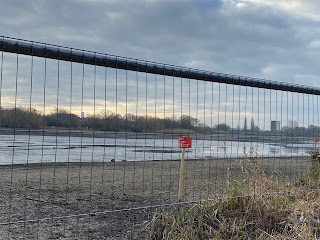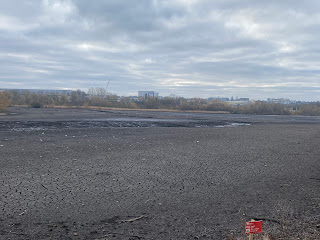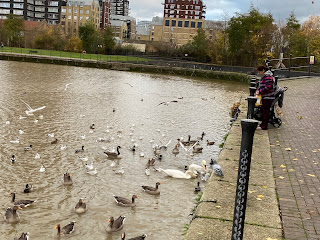I continue with the Black-headed Gull, or Chroicocephalus ridibundus to use its Latin name. No reason, it was just the next one that came to mind. This has been a common sight inland as well as by the coast for as long as I’ve been watching birds. To me, it’s one of those birds that always seems to be, well, just there.
These are the ones that are as common a sight in cities as they are in the countryside, where they follow the ploughs so see what’s been turned up, and they also frequent rubbish dumps as well. They’ll forage anywhere, it seems, which probably explains why you’ll see them just about anywhere.

The first thing everyone who’s into birds knows about these gulls, of course, is that they don’t actually have black heads. Their heads are in fact brown, but only in the summer. Quite why they were not named as being brown-headed I do not know, although there is another (closely related) species of gull called the Brown-headed Gull which can be found in Asia. That said, our Black-headed Gull was classified first so it can’t be said that they got their name because the more accurate one was already taken. The best explanation I’ve found is that they look black from a distance, although that doesn’t really make sense, especially when you consider that there are three more gull species which actually do have black heads (and that’s just limiting it to the gulls listed in British bird books; elsewhere in the world, there are others).
Anyway, these small gulls can be encountered in most locations, usually in groups and especially in the winter months when their numbers in Britain, already considerable, swell with visitors from continental Europe. In the winter, of course, their heads are neither black nor brown, but white with what looks like a slight smudge behind the eye.
They always seem like quite sociable birds to me, by which I mean that they’re usually seen in groups. I may see individual ones flying overhead, but when they’re on the ground they almost always seem to be in groups. Big groups, more often than not; Many is the time when I have resorted to simply writing “lots” in my notes after the entry for “BH gull”.
Their call always reminds me (for some reason) of the noise made by a group of children when they’re all trying to talk at once, leading all of them to be louder in order to make themselves heard. Everyone has something to say, at the same time! The bird book renders it as kree-aaa, which sounds somewhat harsh to me as I think their call, even when there’s a lot of them, comes across as less harsh than that of the larger gulls.
In East Finchley I can almost guarantee that I will see them in the local park, Cherry Tree Wood. Not in particularly big groups, though, as said park is fairly small in the grand scheme of things (and it only gets a water feature on a temporary basis, when it’s been raining a lot).
I think that Black-headed Gulls are, like Feral Pigeons and Carrion Crows and Starlings and Magpies, the sort of birds we tend to take for granted, purely because they’re always around, and usually in large numbers. Maybe it’s a good thing that there are some species of bird that can be regarded thusly.
Their numbers, especially in terms of the ones who come here for the winter, have apparently slightly declined over the past few years (which is probably why the RSPB has them on the ‘amber’ list). The residents population is stable, though, so hopefully they’ll be around, with something to say, for a while yet.





















